Taking a Close Look at Your Dog’s Grooming Products: A Comprehensive Guide
Taking care of your furry friend is important, and grooming is an essential part of their overall health and well-being. However, have you ever thought about the ingredients in your dog’s grooming products? Just like with human products, some ingredients in dog grooming products can be harmful and cause allergic reactions or other health issues.
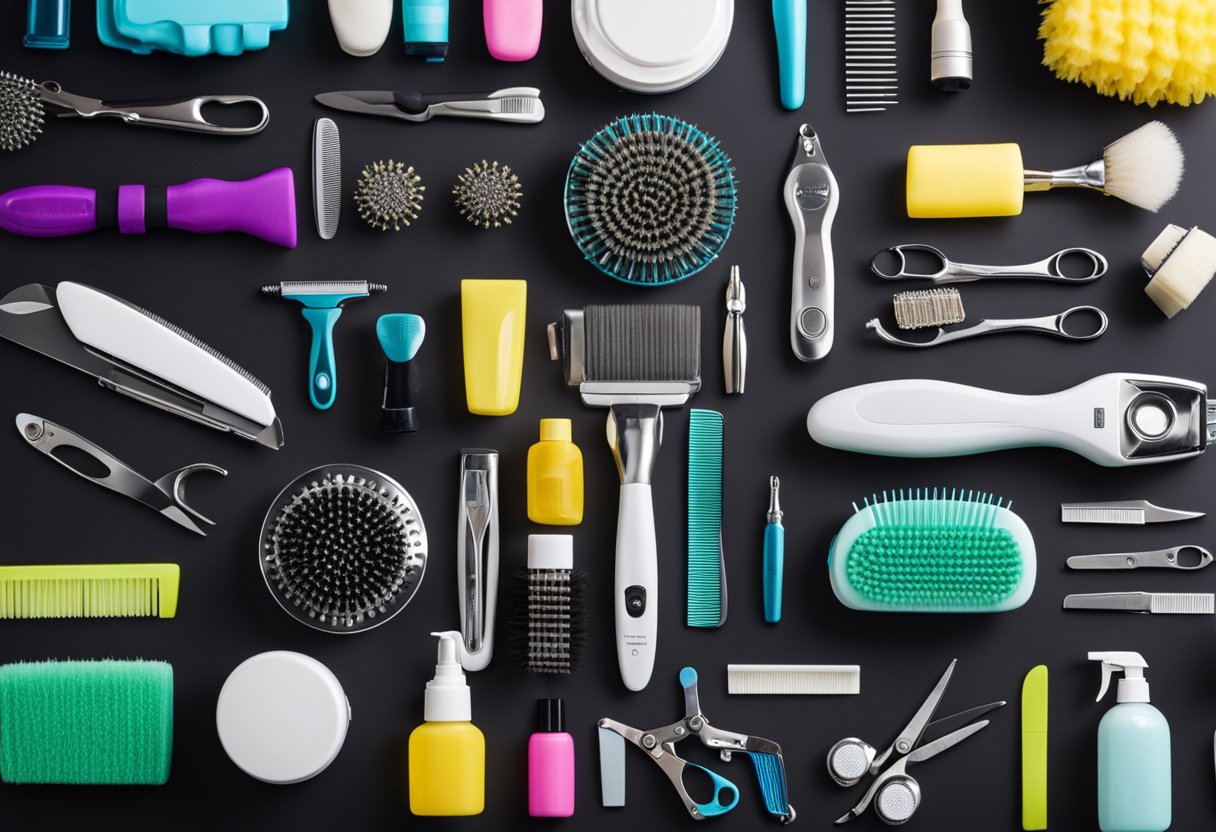
Understanding your dog’s grooming needs is the first step in ensuring that you are using the right products. Different breeds have different grooming needs, so it’s important to research what your specific breed requires. For example, dogs with long hair may need more frequent brushing and trimming than short-haired breeds. Regular grooming can help prevent skin issues, matting, and other problems that can arise from poor grooming habits.
Evaluating grooming products is also crucial in ensuring that your dog stays healthy. Look out for harmful ingredients such as parabens, sulfates, and phthalates, which can cause skin irritation and other health issues. Consider using organic or all-natural products that are free from harmful chemicals. It’s also important to read labels carefully and do research on the products you use. By taking a closer look at your dog’s grooming products, you can ensure that you are using safe and effective products that will keep your furry friend healthy and happy.
Key Takeaways
- Understanding your dog’s grooming needs is the first step in ensuring that you are using the right products.
- Regular grooming can help prevent skin issues, matting, and other problems that can arise from poor grooming habits.
- Look out for harmful ingredients such as parabens, sulfates, and phthalates, and consider using organic or all-natural products that are free from harmful chemicals.
Understanding Your Dog’s Grooming Needs
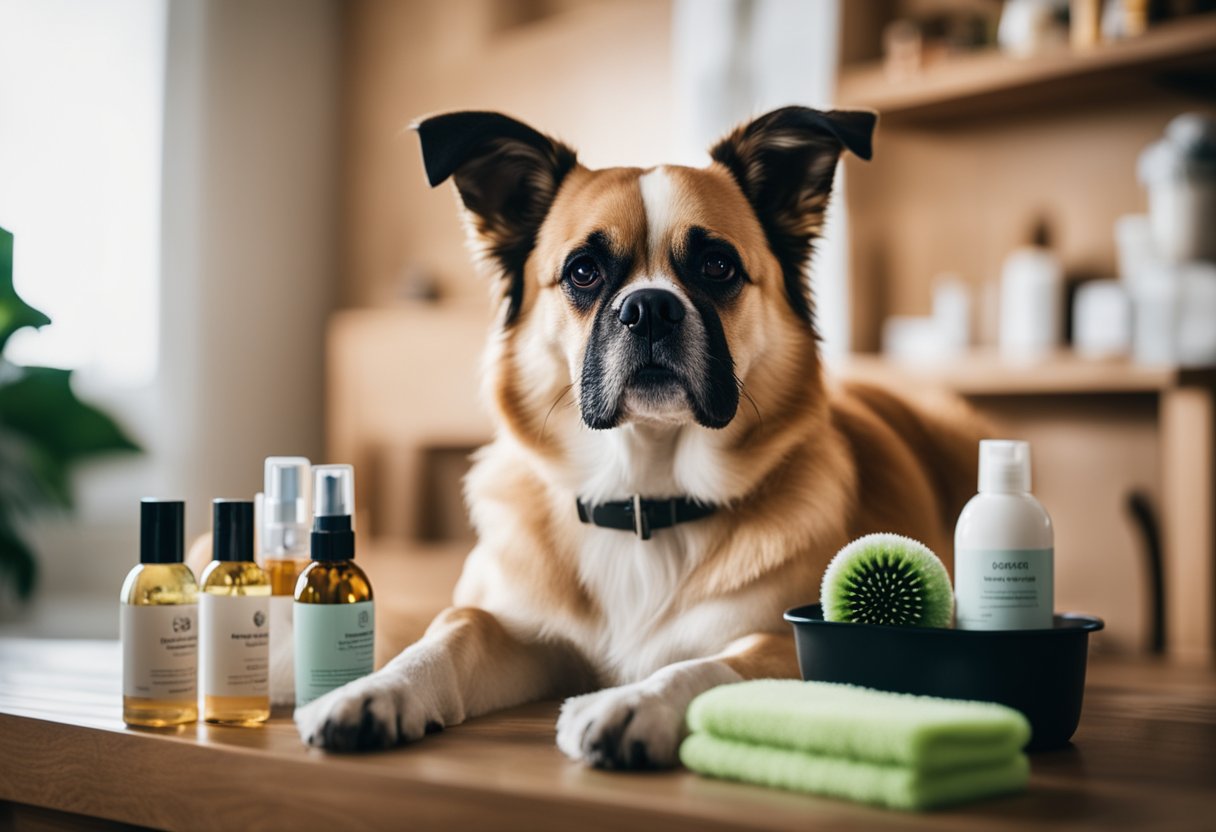
As a responsible dog owner, it’s important to keep your furry friend clean and healthy. Proper grooming is essential to maintain your dog’s overall well-being. However, not all dogs have the same grooming needs. In this section, we will discuss how to assess your dog’s grooming needs and create a grooming routine that suits your pet’s unique requirements.
Assessing Coat Type and Skin Health
The first step in understanding your dog’s grooming needs is to assess their coat type and skin health. Dogs with long hair, such as Shih Tzus or Poodles, require more frequent grooming than short-haired breeds like Beagles or Boxers. Dogs with thick coats, such as Huskies or Malamutes, may need more frequent brushing to prevent matting and tangling. On the other hand, dogs with thin or fine coats, such as Greyhounds or Whippets, may require less frequent grooming.
It’s also important to check your dog’s skin health regularly. If your dog has dry or flaky skin, you may need to use a moisturizing shampoo or conditioner. Dogs with allergies or skin conditions may require specialized grooming products or treatments. Always consult with your veterinarian if you notice any changes in your dog’s skin or coat.
Frequency of Grooming Sessions
The frequency of grooming sessions depends on your dog’s coat type, activity level, and lifestyle. Generally, most dogs require grooming every 4 to 6 weeks. However, some dogs may need more frequent grooming, such as those with long hair or those that spend a lot of time outdoors. Other dogs may require less frequent grooming, such as those with short hair or those that spend most of their time indoors.
Regular grooming sessions should include brushing, bathing, nail trimming, and ear cleaning. You may also need to trim your dog’s hair or fur, especially around the eyes, paws, and ears. Always use high-quality grooming products that are safe for your dog’s skin and coat. Avoid using human shampoo or soap, as these can cause skin irritation and dryness.
In conclusion, understanding your dog’s grooming needs is essential to keep them healthy and happy. By assessing their coat type and skin health, and determining the frequency of grooming sessions, you can create a grooming routine that suits your pet’s unique requirements.
Evaluating Grooming Products
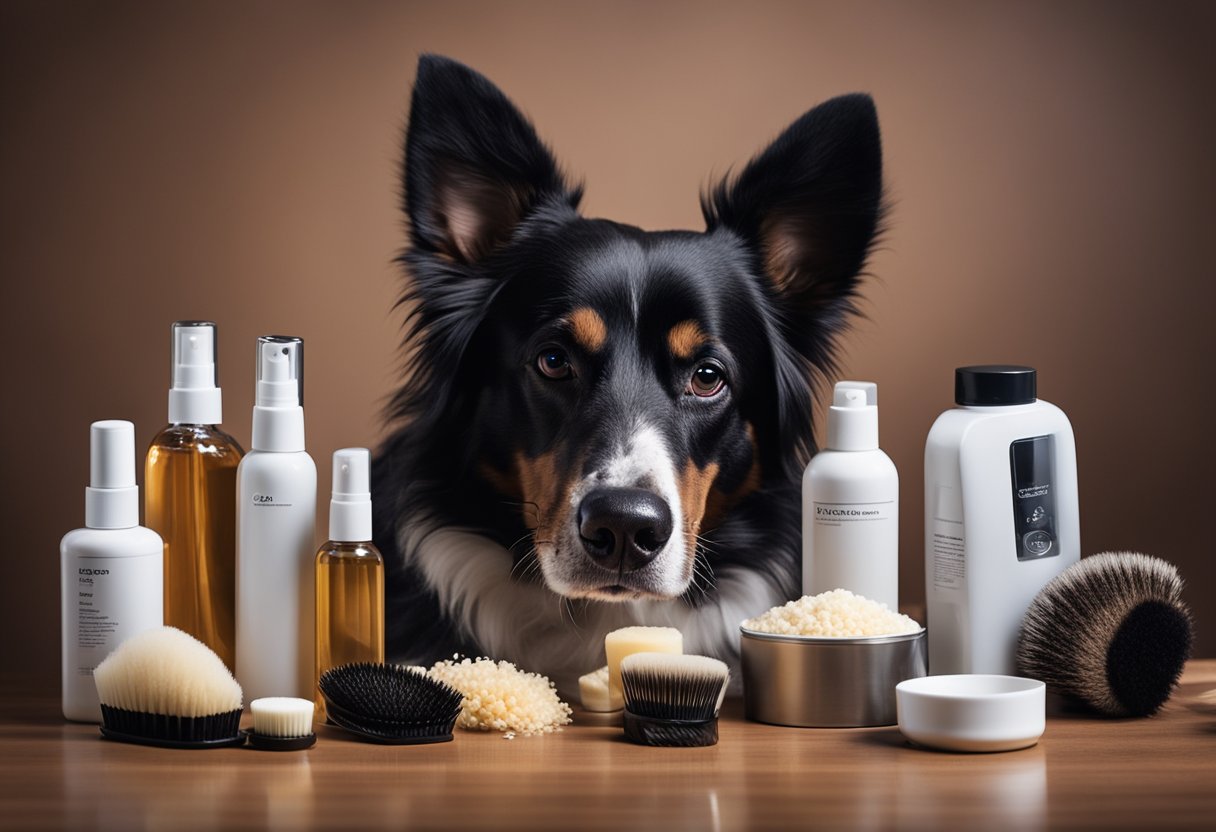
When it comes to grooming your dog, it’s important to choose products that are safe and effective. Here are some things to consider when evaluating grooming products for your furry friend.
Shampoos and Conditioners
When selecting a shampoo and conditioner for your dog, it’s important to choose a product that is specifically formulated for dogs. Human shampoos and conditioners can be too harsh for a dog’s sensitive skin and can cause irritation. Look for products that are pH balanced and free from harsh chemicals such as parabens, sulfates, and phthalates. You may also want to consider using an eco-friendly product that is better for the environment.
Brushes and Combs
The type of brush or comb you choose will depend on your dog’s coat type. For example, a slicker brush is good for dogs with long, thick coats, while a bristle brush is better for dogs with short, smooth coats. It’s important to choose a brush or comb that is appropriate for your dog’s coat type to avoid causing discomfort or damaging their coat. Regular brushing can help keep your dog’s coat healthy and shiny.
Clippers and Scissors
If you plan on trimming your dog’s hair at home, it’s important to choose the right clippers and scissors. Clippers should be specifically designed for use on dogs and should have adjustable blades to allow for different hair lengths. Scissors should be sharp and have rounded tips to avoid accidentally injuring your dog. If you’re not comfortable trimming your dog’s hair at home, it’s best to leave it to a professional groomer.
By taking the time to evaluate grooming products for your dog, you can help ensure that they stay healthy, happy, and looking their best. Remember to always follow the manufacturer’s instructions when using grooming products and to consult with your veterinarian if you have any concerns.
Resources
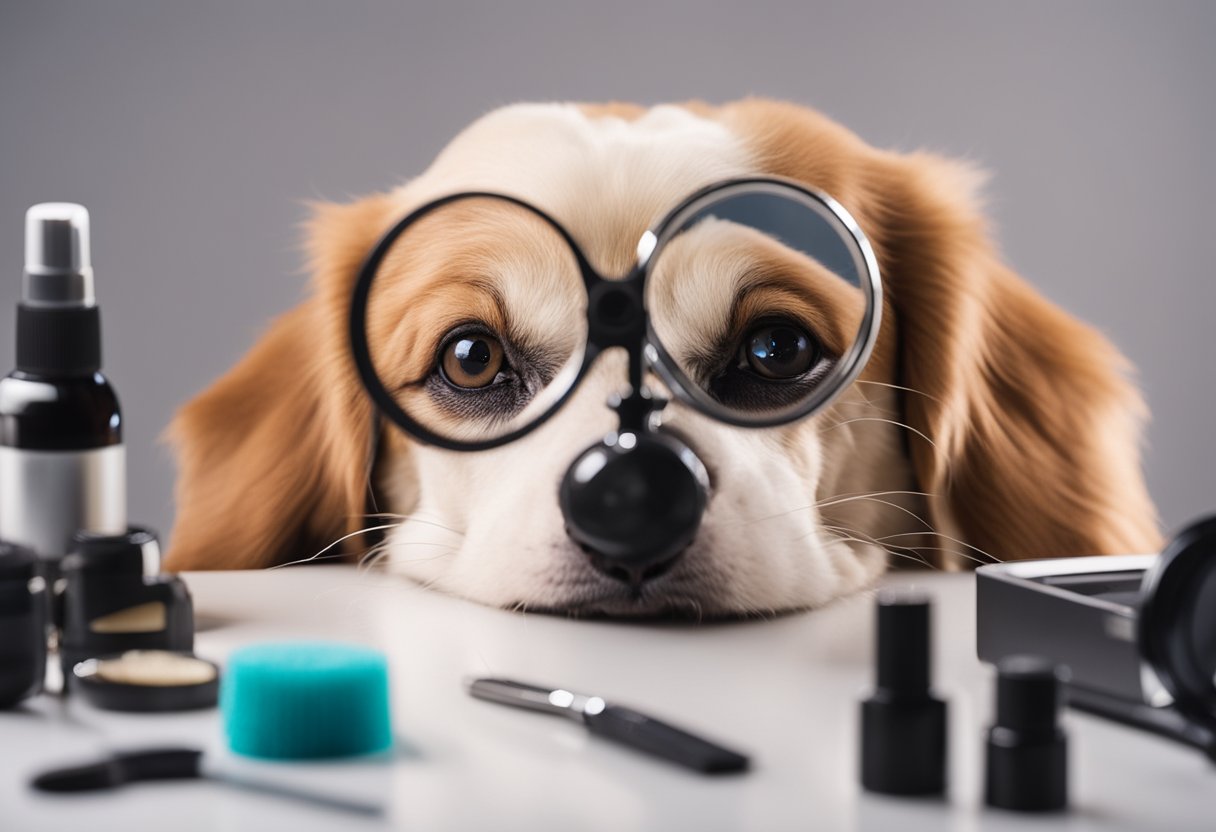
When it comes to choosing grooming products for your dog, it’s important to do your research and make informed decisions. Here are some resources to help you get started:
1. The David Suzuki Foundation’s “Dirty Dozen” cosmetic chemicals to avoid
The David Suzuki Foundation is a Canadian non-profit organization that works to protect the environment and promote sustainability. They have compiled a list of the “Dirty Dozen” cosmetic chemicals that are harmful to both people and pets. One of the ingredients on this list is BHA (butylated hydroxyanisole), which is a preservative commonly found in dog shampoo. BHA can cause allergic reactions in the skin, so it’s best to avoid products that contain this ingredient. Here is a link to their article on BHA.
2. Expert recommendations for at-home dog grooming products
NBC News has compiled a list of the 22 best at-home dog grooming products, according to experts. This list includes everything from shampoo and conditioner to brushes and nail clippers. One of the products recommended is Wild One’s Rinseless Shampoo, which is a spray formula that can be used in between baths. Here is a link to the full list of recommendations.
3. Tips for step-by-step dog grooming
If you’re new to grooming your dog at home, it can be helpful to follow a step-by-step guide. Pawedin has a great article that covers everything from prep work to post-bath drying. They recommend brushing your dog’s coat before the bath to remove loose fur and mats, and using lukewarm water to wet their coat before applying shampoo. Here is a link to their full guide.
4. Advice from a veterinarian on dog grooming
BetterVet is a website that provides advice and resources for pet owners. They have an article on dog grooming tips, which includes advice from a veterinarian. One of their tips is to brush your dog’s coat regularly to remove loose hair, dirt, and debris. Brushing can also help stimulate healthy skin and hair growth, and is a good opportunity to bond with your pup. Here is a link to their full article.
Conclusion
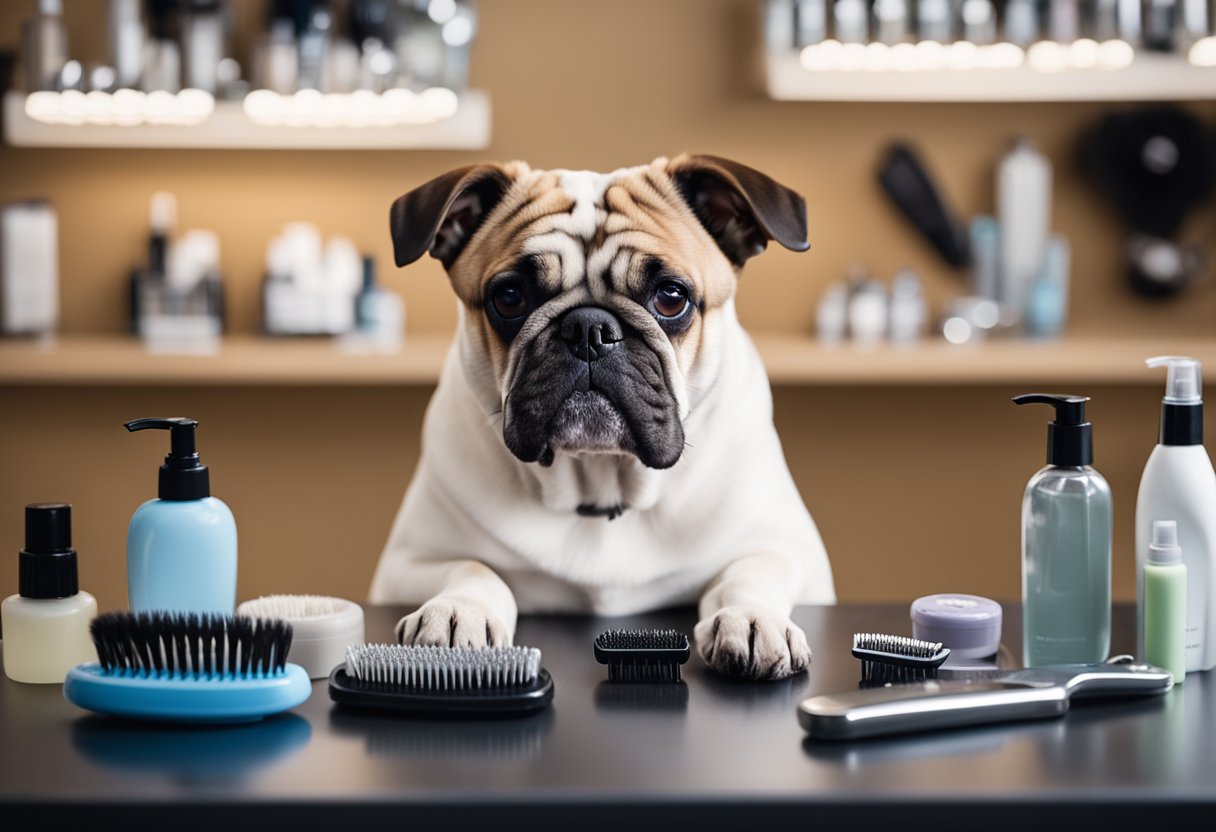
Taking a close look at your dog’s grooming products is an important step in ensuring their health and well-being. By carefully examining the ingredients in your dog’s shampoo, conditioner, and other grooming products, you can help prevent allergic reactions and other potential health problems.
When selecting grooming products for your dog, it’s important to look for products that are specifically designed for dogs. Human grooming products can contain ingredients that are harmful to dogs, such as fragrances, dyes, and preservatives. By choosing products that are made specifically for dogs, you can help ensure that your dog stays healthy and happy.
In addition to choosing the right grooming products, it’s also important to establish a regular grooming routine for your dog. Regular grooming can help prevent matting, tangles, and other skin and coat problems. It can also help keep your dog comfortable and reduce shedding.
Overall, taking a close look at your dog’s grooming products and establishing a regular grooming routine can help ensure that your dog stays healthy and happy. By following these simple steps, you can help keep your dog looking and feeling their best.
Frequently Asked Questions

What are the essential tools needed for professional dog grooming?
To groom your dog like a pro, you need a few essential tools, including a slicker brush, a comb, a pair of scissors, and nail clippers. These tools help you maintain your dog’s fur, remove tangles, and trim their nails. You can also invest in a good quality clipper if you want to give your dog a haircut at home.
Which dog grooming tools are most effective for managing shedding?
Dogs shed their fur, and it can be a challenge to manage all the loose hair. The most effective tools for managing shedding include a deshedding tool, a slicker brush, and a grooming glove. These tools help to remove loose hair and prevent mats from forming in your dog’s coat.
How do I choose the best dog grooming tools for small breeds?
Small breeds have different grooming needs than large breeds. When choosing grooming tools for small breeds, look for smaller-sized brushes and combs that can easily fit in your hand. You can also consider a grooming glove or a rubber brush that is gentle on your dog’s skin.
What are the common mistakes to avoid during dog grooming?
One of the most common mistakes during dog grooming is cutting your dog’s nails too short. This can cause bleeding and pain. Another mistake is not brushing your dog’s fur before bathing, which can lead to mats and tangles. Lastly, using the wrong type of shampoo can cause skin irritation and other health problems.
What techniques do groomers use to keep dogs calm during grooming sessions?
Groomers use various techniques to keep dogs calm during grooming sessions, including positive reinforcement, treats, and soothing music. They also use calming sprays and pheromone diffusers to create a relaxing environment for your dog.
Are there specific brands recommended for high-quality dog grooming tools?
There are many high-quality brands of dog grooming tools available in the market. Some of the most popular brands include Andis, Oster, Furminator, and Chris Christensen. It’s important to choose a brand that suits your dog’s specific grooming needs and is within your budget.
